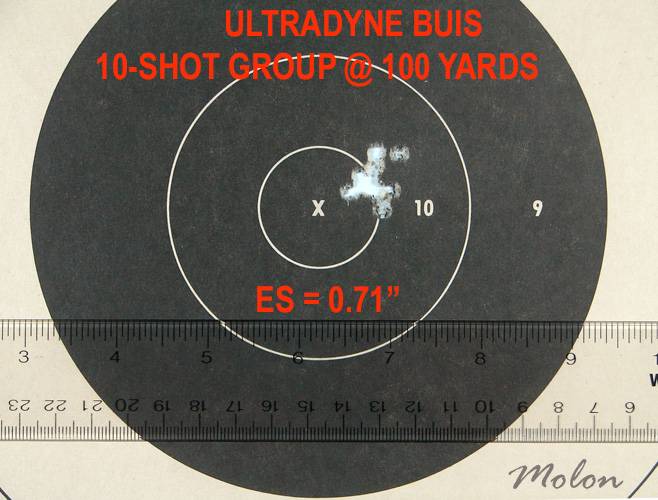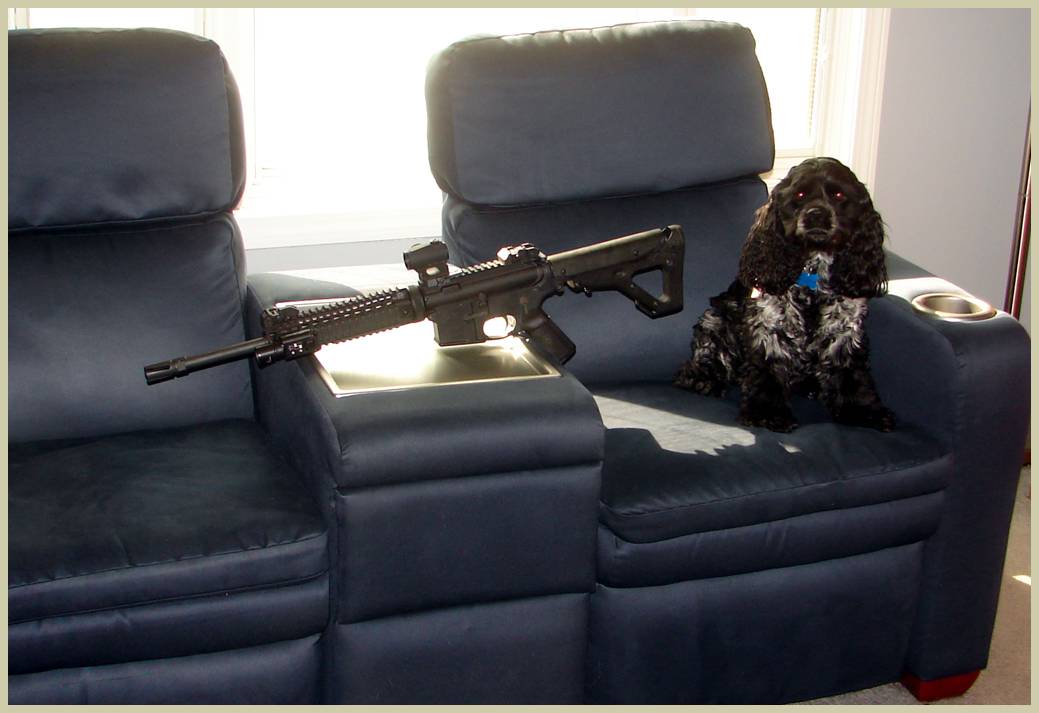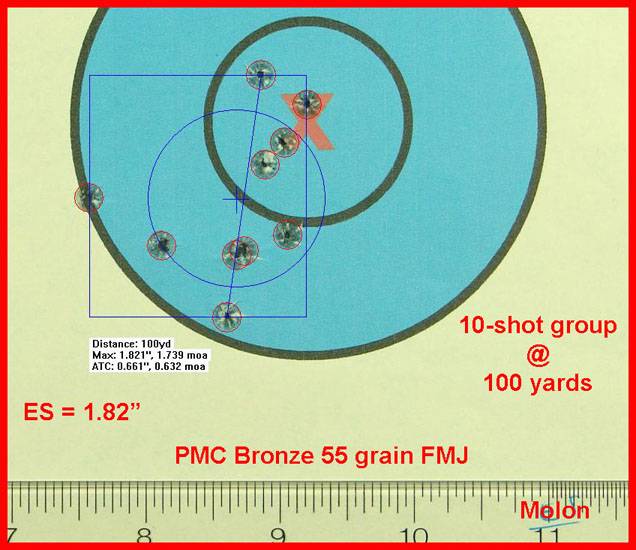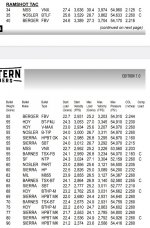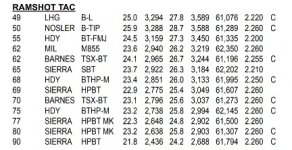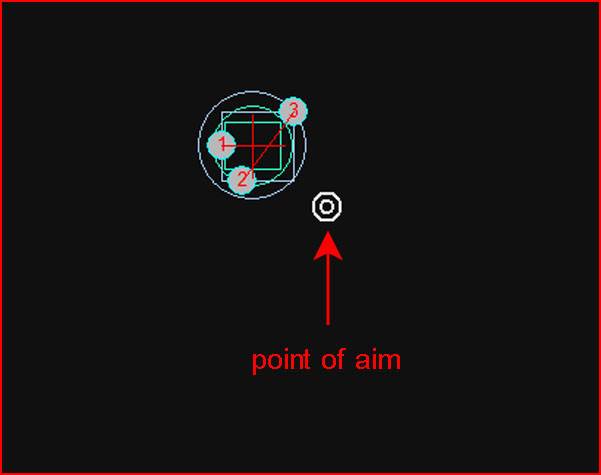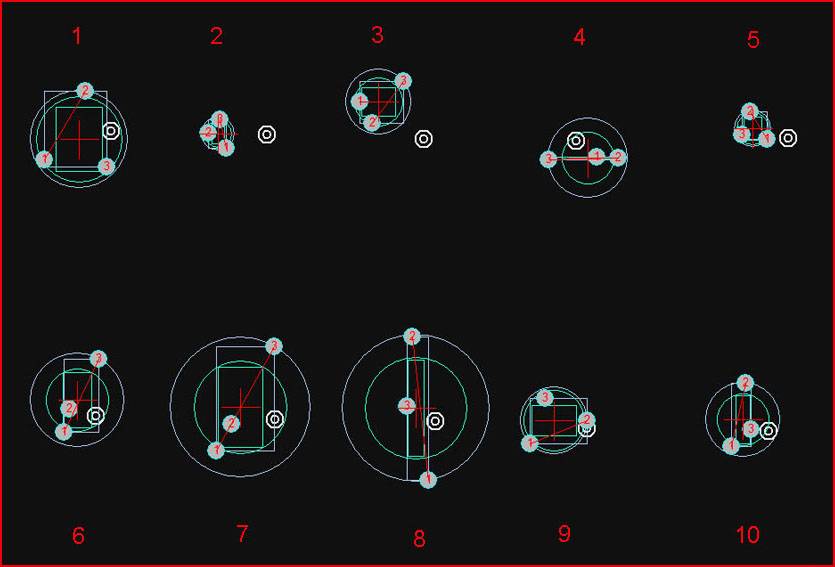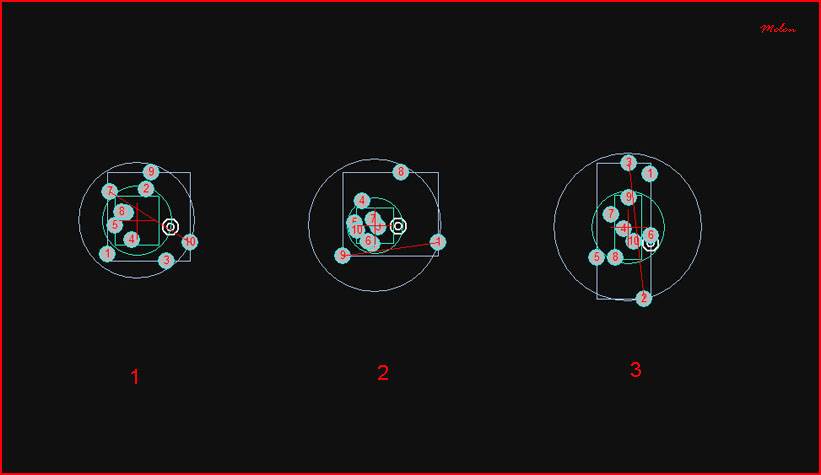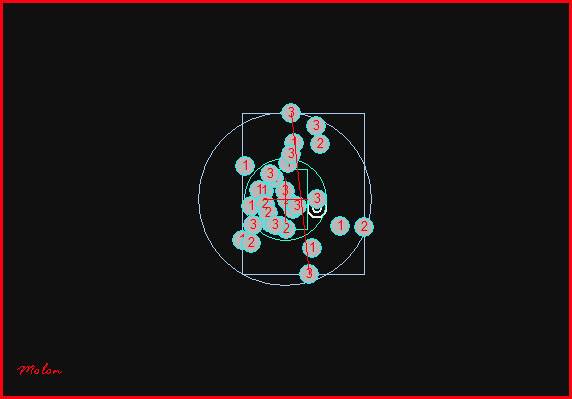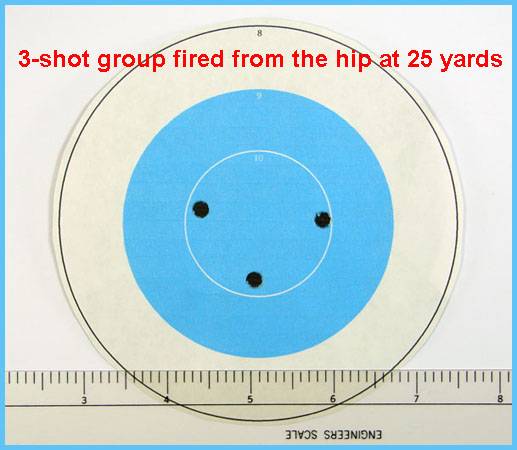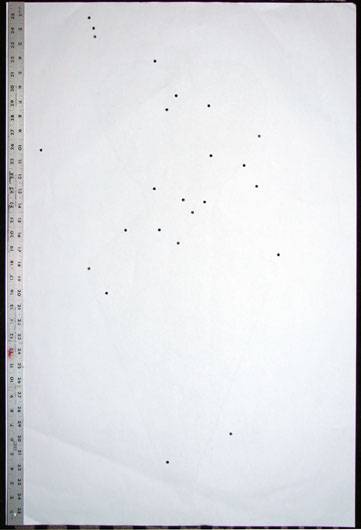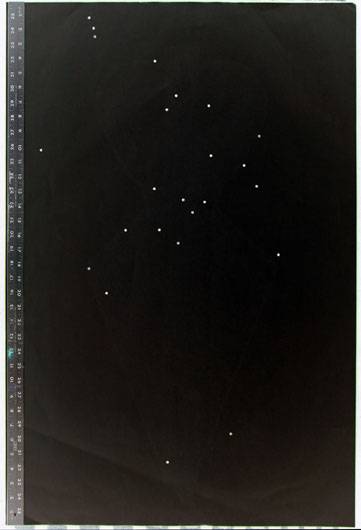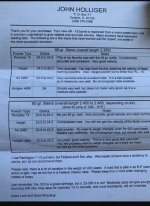. We are looking for 1/4 MOA at 100 yards or less.
I'm afraid that you're in for some major disappointment because semi-automatic AR-15s chambered in 5.56mm/223 Remington are not capable of consistently producing true 1/4 MOA precision. The 3-shot groups that you're shooting are not a valid indicator of the radial dispersion of an AR-15/ammunition combination.
The Internet Commando’s Nephew
The scene opens with Billy rushing into his house to tell his mother of his accomplishments while at the shooting range with his uncle that afternoon.
Billy: Guess what, Mom! I can shoot sub-MOA groups all day long with my chrome-lined, NATO chambered AR-15 using XM193 ammunition. I’m a real Internet Commando now!
Mother: Billy, how many shots were in those groups?
Billy: Aw, gee Mom. They were only 3-shot groups, but all the other kids are shooting 3-shot groups.
Mother: And if all the other kids jumped off a bridge, would you do that too?
Billy: No, Mom
Mother: Billy, you know that 3-shot groups aren’t good for you. What have your father and I told you about 3-shot groups?
Billy: 3-shot groups don’t mean jack-shit?
Mother: That’s right, Billy. So how many of those 3-shot groups of yours were actually sub-MOA.?
Billy: Well . . . only two.
Mother: And how many groups did you actually fire?
Billy: Five.
Mother: Billy . . .?
Billy: Ok, it was ten groups. You happy now?
Mother: So you fired ten, 3-shot groups and CHERRY- PICKED two groups to brag about? Your father and I raised you better than this, Billy.
Billy: Sorry, Mom.
Mother: Sorry doesn’t cut it, young man. I’m going to have a long talk with your uncle and you’re no longer allowed to log-on to glock-gab.com. That site is rotting your brain.
Billy: But Mom!
Mother: No buts, Billy. And the only reason that I haven’t grounded you is because you haven’t used the “F” word.
Billy: You mean f . . . l . . .
Mother: Watch it, Billy.
Billy: Flier!
(Billy turns and runs to his bedroom as fast as he can.)
Mother: That’s it! You’re grounded, and just wait until your father gets home! This is all because of that uncle of yours!”
After Billy finished his week of being grounded, his parents decided to supervise an experiment at the shooting range with him to reinforce the folly of using 3-shot groups to evaluate the accuracy of an AR-15 rifle/ammunition combination. Shooting from a bench-rest at a distance of 100 yards using his father’s Krieger barreled, semi-automatic AR-15 (Billy’s actually a pretty good shot for his age) and using his father’s hand-loads topped with Hornady 55 grain FMJ projectiles, they had Billy shoot thirty shots in a row (each round was single-loaded) on thirty different targets; one shot per target (all while monitoring the wind conditions on the range using a Wind Probe). (Prior to Billy shooting his thirty shots, Billy’s father fired a sub-MOA 10-shot control group from the same rifle using match-grade hand-loads.) They then collected their targets and headed home to continue the experiment.
Once at home, they entered each of the thirty individual targets into the computer using the software program RSI Shootng Lab. Next, they used the software program to form ten, 3-shot groups from the thirty individual shots. (The first 3-shot group was formed from shots 1-3, the second 3-shot group was formed form shots 4-6 and so on.) The results are pictured below. (The point-of-aim for the groups shown below is the double white circle.)
The ten, 3-shot groups.
Billy’s parents pointed out to him that the 3-shot groups had wide variations in their extreme spreads from shot-group to shot-group. The extreme spread of the largest group (group number 8) was five times as large as the smallest group (group number 2). They also pointed out the centers of the various 3-shot groups varied quite a bit in their location from the point-of-aim. For example, all three shots from group number 3 where higher than the point-of-aim, while all three shots from group number 4 where lower than the point-of-aim. Also, the center of group number 3 was to the left of the point-of-aim, while the center of group number 4 was to the right of the point-of-aim.
(If Billy’s uncle had fired those ten, 3-shot groups, he would have cherry-picked group number 2 and group number 5 to represent the accuracy/precision of his AR-15 rifle and ammunition and pretended that the other eight groups didn’t exist.)
Next, Billy’s parents had him form three, 10-shot groups from the thirty individual shots using the software program. (The first 10-shot group was formed from shots 1-10, the second 10-shot group was formed from shots 11-20 and the third 10-shot group was formed from shots 21-30.) The results are pictured below.
Upon seeing the 10-shot groups pictured above, Billy immediately noticed how much smaller the variations in extreme spreads were from shot-group to shot-group. In fact, the extreme spread of the largest 10-shot group (group number 3) was only 1.5 times as large as the extreme spread of the smallest 10-shot group (group number 1). Billy even pointed out to his parents that the centers of the three 10-shot groups were all located very similarly from the point-of-aim.
“That’s my boy,” cheered Billy’s mother.
Billy’s father proudly remarked to Billy, “So now you see why 10-shot groups give us a much better picture of the actual radial dispersion of the shots fired from a rifle/ammunition combination.”
Billy’s father went on to explain, “And if we over-lay three 10-shot groups that were fired in a row on each other and use the mean radius of the 30-shot composite group that is formed, we get a very good indication of the radial dispersion produced by a rifle/ammunition combination.”
Billy then asked his parents, “Should I try to explain this stuff to Uncle?”
His father replied, “You can try . . .”
....
The shot-groups depicted in the above fable are from my actual targets obtained during live-fire testing.
....
The Texas Sharpshooter
(Second Cousin of the Internet Commando)
Envious of all the attention his cousin, the Internet Commando, receives at the local tavern, as well as on the popular firearms forums on the Internet, our antagonist decides it is time for him to make his mark in the world. He decides he needs to perform some feat of marksmanship that surpasses even the accomplishments of his cousin, the Internet Commando.
But what can he possibly do that the Internet Commando hasn’t already done? Our antagonist recalls the tales of the Internet Commando. He remembers his cousin boasting of shooting sub-minute of angle groups using XM193. How could he possibly top that? Then, it dawns on him. The Internet Commando was using his
sights when he fired those sub-minute of angle groups with XM193. “Anyone can shoot a small group using their sights,” he thinks to himself. “It would take real skill to shoot a good group without using the sights, say . . . as in shooting from the hip!”
Seeing his destiny laid out before him, our antagonist sets up his target at 25 yards and proceeds to fire on the target shooting from the hip. As our antagonist walks towards his target to examine his results he begins to grin from ear to ear. “Wait until my cousin sees this,” he actually speaks aloud.
That night at the local tavern our antagonist shows his target (pictured below) to those who have been hanging on every word that his cousin, the Internet Commando has been saying. The people are absolutely astonished that our antagonist was able shoot such an amazing group firing from the hip at 25 yards. Bewildered by the incredible skill demonstrated by our antagonist, the Internet Commando tells his cousin, “You’re quite the sharpshooter Tex!”
While the above fable is fictitious, it is based based on a real target that I fired from an AR-15. I actually fired that group pictured above from 25 yards while shooting from the hip. For those of you that haven’t already figured out how I was able to perform such a feat, here are the little details that Texas Sharpshooters fail to mention.
I actually fired 30 shots from the hip at the “target” which was a blank piece of paper measuring 36” X 24” (kind of like the broad side of a barn). I then found 3 shots that formed a cluster and “drew” the bulls-eye around the shots. Those 3 shots occurred randomly. Not from any outstanding shooting skills of mine, nor from any outstanding qualities of the rifle or ammunition I was using, but
purely by chance. (The actual extreme spread of the 30-shot group was 31”; that's 2 feet, seven inches.)
The fallacy of the Texas Sharpshooter is based on the fact that clusters of data can occur randomly or by chance (the clustering illusion). “In making statistical observations, results will not be distributed with total uniformity but will naturally be sparser in some areas and denser in others,
purely by chance.”* Human beings tend to want to discern patterns in random clusters where none actually exist. We try to assign significance where there isn’t any.
In the case of the Texas Sharpshooter “information that has no relationship is interpreted or manipulated until it appears to have meaning.”* More specifically, “although the shots were random, the Texas Sharpshooter makes it appear as though he has performed a highly non-random act. In normal target practice, the bulls-eye defines a region of significance, and there's a low probability of hitting it by firing at random. However, when the region of significance is determined after the event has occurred, any outcome at all can be made to appear spectacular.”*
If you had not known that the Texas Sharpshooter had drawn the bulls-eye after the shots were fired, you would “falsely assume he's an excellent marksman by reasoning from effect (bullet holes in the bulls-eye) to cause (he fired the bullets).”* The fatal flaw is “assigning significance to the outcome of a random event after it has occurred.”* The danger is in “jumping to a conclusion that a random cluster is a causal pattern.”* The Texas Sharpshooter “takes a random cluster, and by drawing a bulls-eye onto it makes it appear to be causally determined.”*
Here is a pic of the target before the bulls-eye was drawn on it, shown with a yardstick on the left border.
Here is the target in negative.
Lastly, the target in negative with the random cluster (actually two random clusters) highlighted.
….
Two schools of thought pertaining to the Texas Sharpshooter:
“We are Texas Sharpshooter.” The Borg Collective model.
“There can be only one!” The Highlander construct.
....



